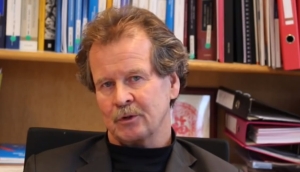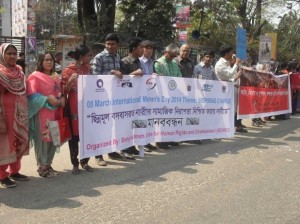Posts Tagged CVT minnesota
Creating a world without torture: March in review
Posted by World Without Torture in News & Clippings, Rehabilitation on 31/03/2014
We summarise some of the biggest news stories, statements, events and news from the World Without Torture blog, Facebook and Twitter pages over the month of March.
Don’t forget to keep checking the blog in the coming weeks for more. And click here to visit our Facebook page, and here to visit our Twitter feed.
‘Europe Act Now’ campaign changes the way Europe views Syrian refugees
For one week in March, we donated our Twitter feed to husband and wife Osama and Zaina, two Syrian refugees who fled Aleppo, Syria, to seek safety in Europe.
However, due to tough restrictions on movement and incredible bad luck, they now find themselves stuck in Greece with no possessions, following a robbery they experienced shortly after arriving in the country.
Their story is just one of many promoted by European Council on Refugees and Exiles (ECRE) who are running the ‘Europe Act Now’ Twitter campaign to pressure politicians in Europe to alter the way Syrian refugees are viewed, with the ultimate aim to make their passages to safety in Europe easier.
To read about our role in the campaign just click this link.
New video, starring IRCT patron, explains the rights of torture survivors
The most popular story on our blog this month has been the release of a new video from the European Center for Constitutional and Human Rights (ECCHR).
The video, which features Dr. Mechthild Wenk-Ansohn from BZFO, an IRCT member, and IRCT patron and former UN Special Rapporteur on Torture Manfred Nowak, discusses what rights torture survivors have under the United Nations Convention.
To view the video, just click this link.
On the Forefront: Restoring justice in Bangladesh
Each year almost 220,000 citizens in Bangladesh are tortured, mainly by the police.
That’s an incredibly high figure, and one which the Bangladesh Centre for Human Rights and Development (BCHRD) want to lower and, ultimately, eradicate.
The problem lies in the implementation of the UN Convention Against Torture, which Bangladesh became a signatory of in 1998. Despite this commitment, torture is still not punishable as a crime under domestic law, meaning perpetrators simply get away with their crimes.
To read more about what BCHRD are doing to restore justice, faith in the authorities, and equal rights, just click this link.
Egypt crackdown brings most arrests in decades (Washington Post)
One story we shared on Facebook this month received a lot of attention, which was particularly pleasing for IRCT member El Nadeem, Cairo, who were quoted in the piece.
The in-depth study from the Washington Post not only assesses the number of Egyptians in detention in recent months, but also looks at their treatment, their rights, and some of the stories of torture heard in recent months.
Click the link or the picture below to read the full story.
On the Forefront: Tackling torture in Cambodia
In June 2013, the Asian Human Rights Commission declared that torture in Cambodia is “systematic” with 141 documented cases of torture in police custody since 2010. With a population of nearly 15 million, perhaps the 141 figure seems low. However this figure is only officially documented cases – unreported instances of torture could be much higher.
And regardless of the numbers, Cambodia is a country still reeling from the terrible effects of the Khmer Rouge regime which, almost exactly 40 years ago, killed at least two-million people through the Cambodian Genocide.
The Transcultural Psychosocial Organisation Cambodia (TPO Cambodia) hope to end the negative effects from this horrifying regime and assist the people of Cambodia to escape trauma.
You can read more about their work by clicking this link.
#JusticeforVeli – Veli deserves compensation 14yrs after losing arm to Turkish authorities
 Veli’s story is complex, unusual, and powerful. Caught up in a prison siege in Turkey in 2000, Veli lost his arms after armed security forces stormed his prison block with a bulldozer which tore down the wall where Veli was standing, ripping off his right arm.
Veli’s story is complex, unusual, and powerful. Caught up in a prison siege in Turkey in 2000, Veli lost his arms after armed security forces stormed his prison block with a bulldozer which tore down the wall where Veli was standing, ripping off his right arm.
After years of torture rehabilitation and legal assistance from IRCT member the Human Rights Foundation of Turkey, Veli was granted a ruling from the European Court of Human Rights which specified his entitlement to compensation.
And so the compensation was paid – until the Turkish authorities overruled the payment. Now they demand that Veli pays the compensation back, at a much higher rate than it was awarded to him.
We joined the Human Rights Foundation Turkey in pressuring the state to end this case and to stop this extended miscarriage of justice by tweeting with the hashtag #JusticeforVeli.
To read more on Veli’s case, and to see how we are helping fight for his rights, click this link.
CVT’s transformation from a small local idea to a global, influential movement
The final ‘On the Forefront’ blog of March focused on Center for Victims of Torture (CVT). Based in the US, this IRCT member has a global reach, assisting victims of torture in the Middle-East, Africa and Asia.
Yet CVT was not always this large and, in fact, grew from only a small conversation with the Governor of Minnesota.
Today CVT is one of the leading networks in torture rehabilitation, prevention, and justice. To read more about the team at CVT and the excellent work they carry out across the globe, simply click this link.







